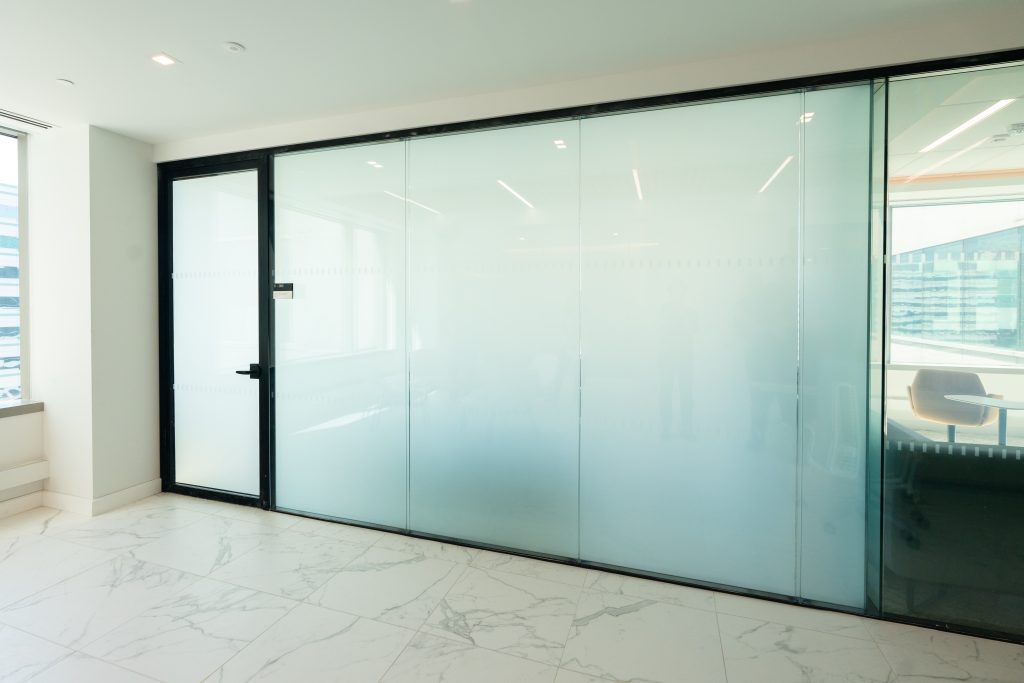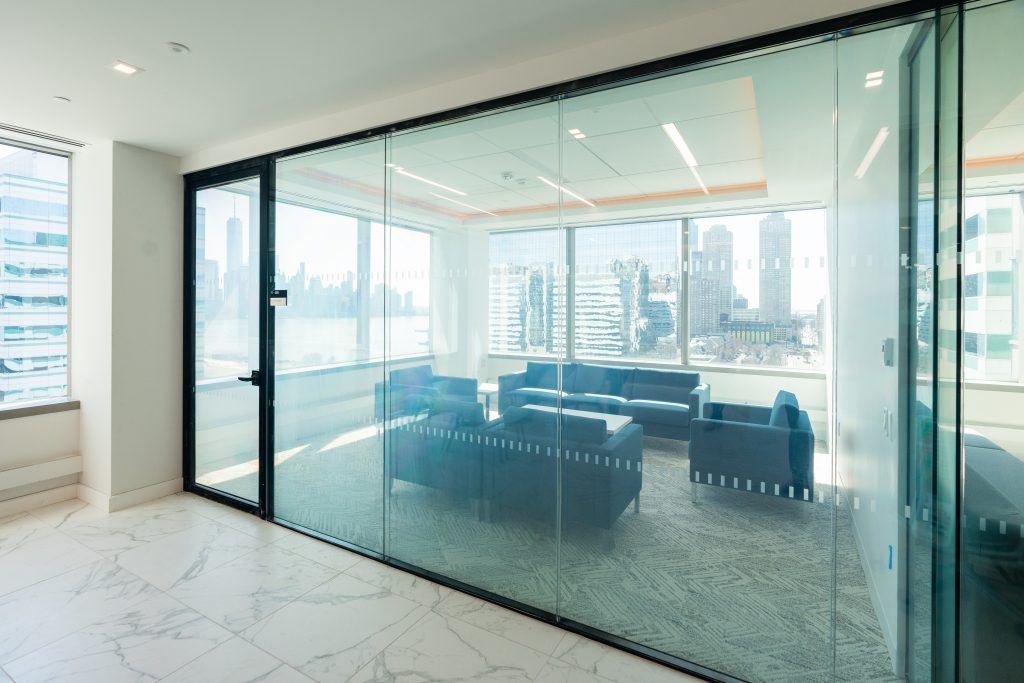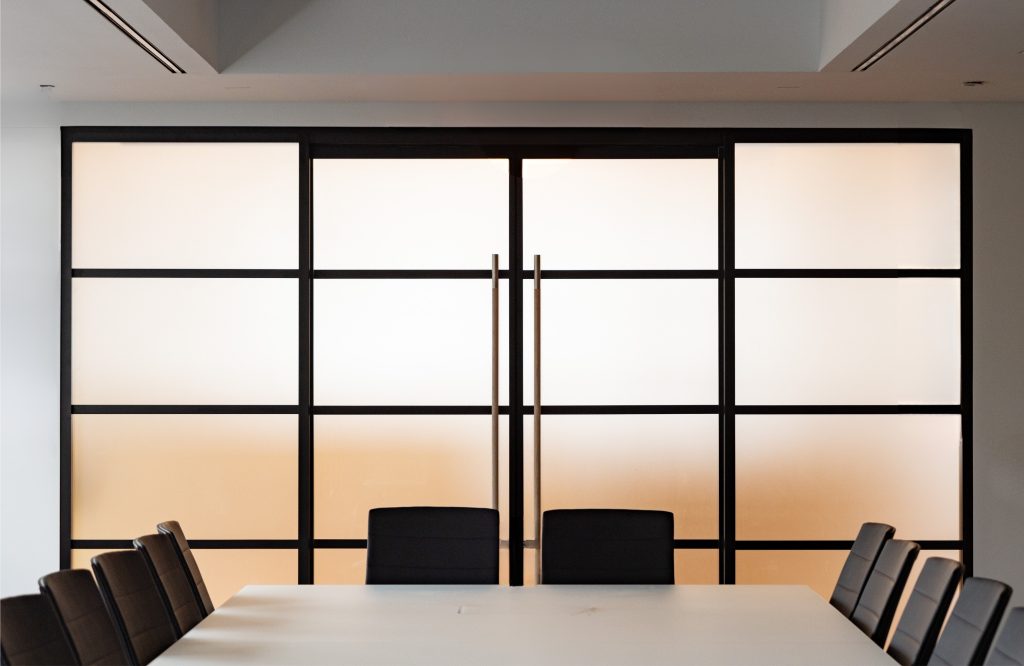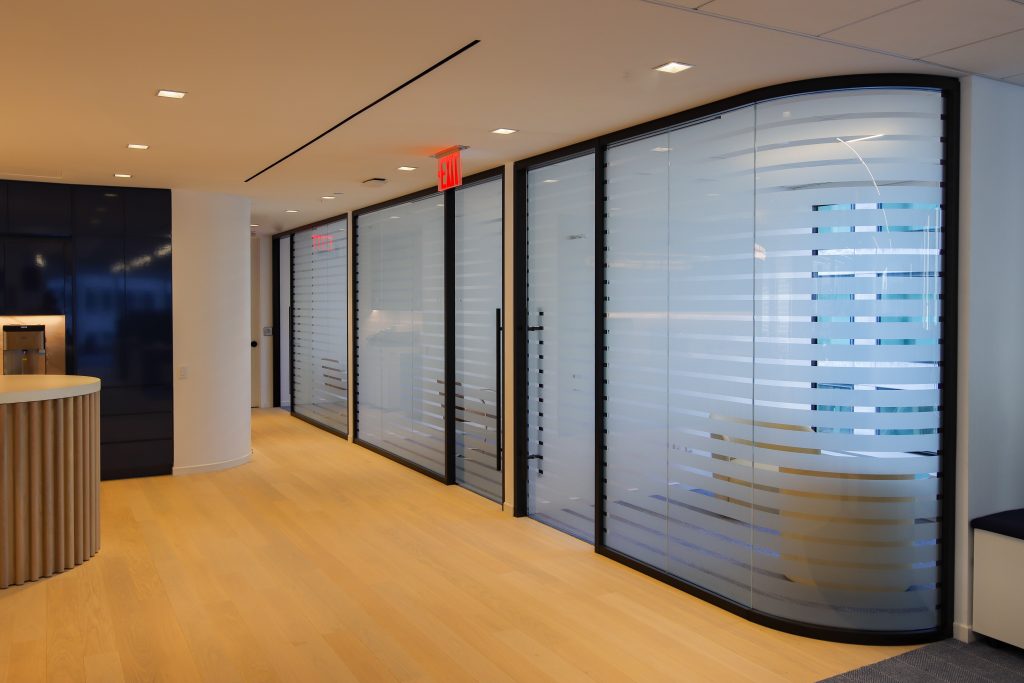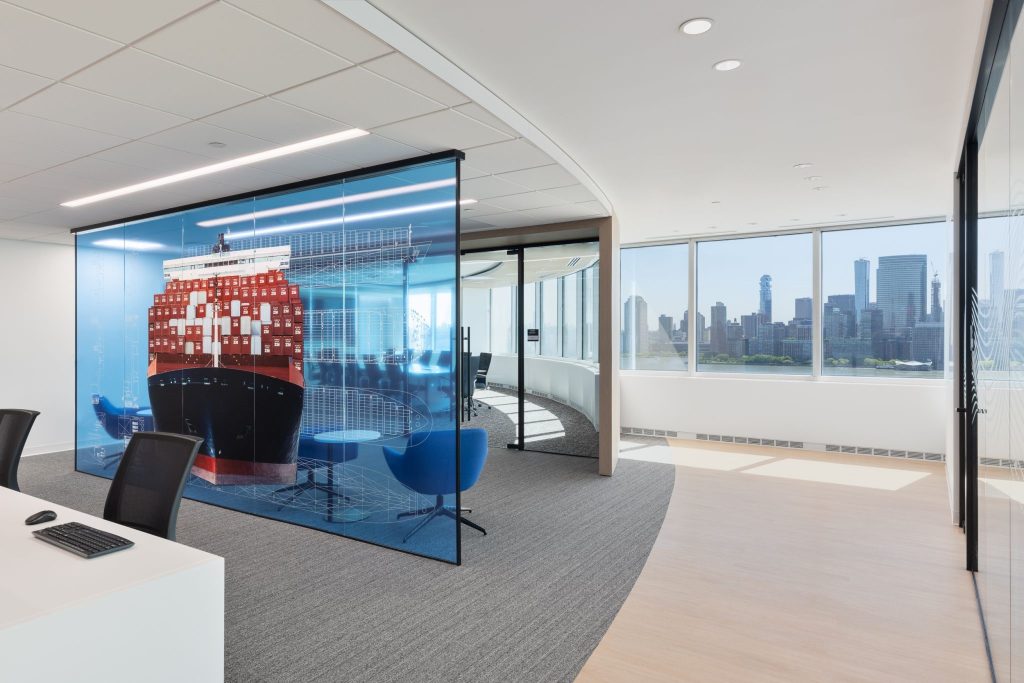Our premium glass wall systems are able to accommodate all kinds of glass types. We work frequently with standard glass types, including clear monolithic tempered glass, low-iron monolithic tempered glass, and laminated glass. We also do many jobs with custom glass types, such as fluted, curved, and switchable glass. When deciding on the type of glass to go with we find that it often comes down to aesthetics, acoustics, pricing, and safety.
Annealed Glass
Annealed glass is the most basic form of glass and is commonly used in windows. But while it comes at a low cost and is easy to produce (compared to other types of glass), this type of glass lacks the strength and safety required in commercial environments because when it breaks, it shatters into large, sharp pieces. As a result, it’s not to code and we do not install annealed monolithic glass into our glass wall systems.
Clear Tempered Glass
On the other hand, clear tempered glass is a type many of our clients often choose for their projects. You can recognize this type of glass by the greenish hue when looking at it from the side. Tempered glass is treated through a controlled heating and rapid cooling process that increases its strength. Tempered glass is roughly four times stronger than annealed glass. So, if it breaks, it shatters into small, relatively harmless pieces. Compared to the other standard and specialty glass types we work with clear tempered glass is the most cost-effective.
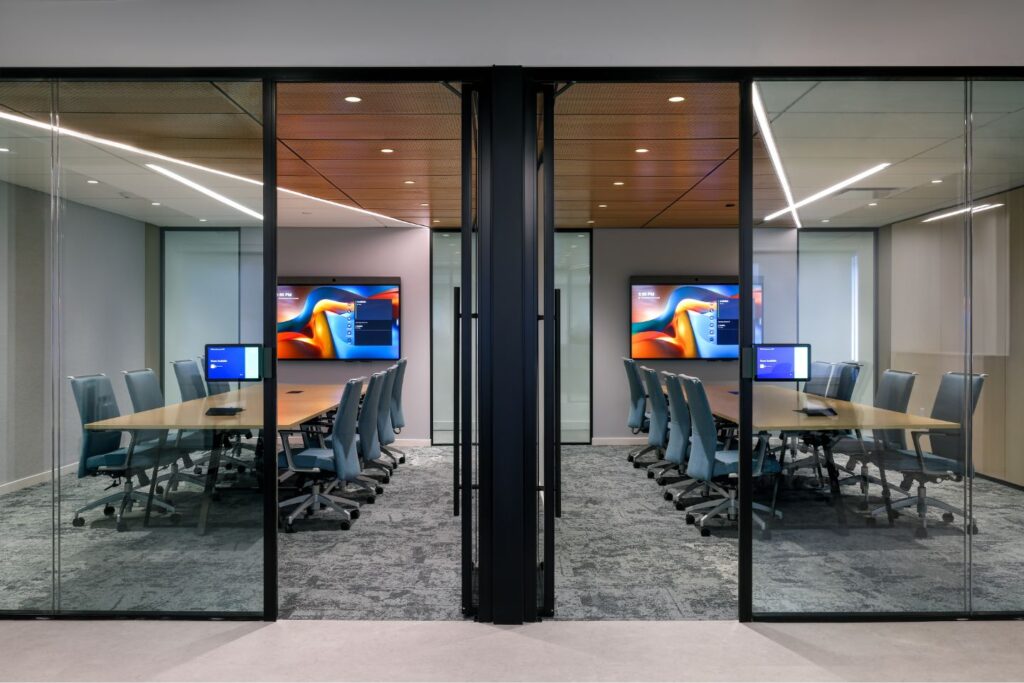
Low-Iron (Ultra Clear) Glass
Low-iron (aka ultra clear) glass has a bluish hue when you look at the glass from the side. It’s manufactured by (you guessed it) reducing the iron content in the material, which allows for true colors to shine through without a greenish tint you sometimes get with clear tempered glass. So, if you’re creating a space with lots of colors in your design elements, low-iron glass may be the right type to choose. Keep in mind though that this glass type is more expensive than clear tempered glass.
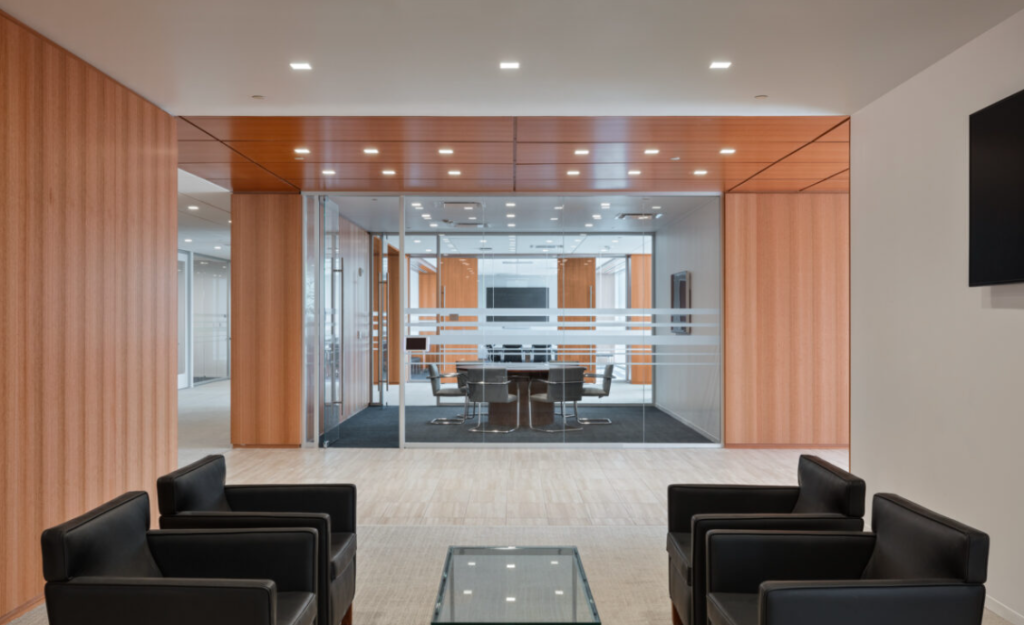
Laminated Glass
Laminate glass is composed of two or more layers of glass with a PVB interlayer. Just like with tempered and low-iron glass the thickness you choose, along with the glass wall system you select, will impact acoustic performance. However, with laminate glass, you can also choose the thickness of the panel as a whole as well as the individual pieces. For those with safety concerns, the interlayer that holds the pieces of glass together also prevents the glass from breaking into pieces if it shatters, making it ideal for institutions (e.g. education, medical, etc.).
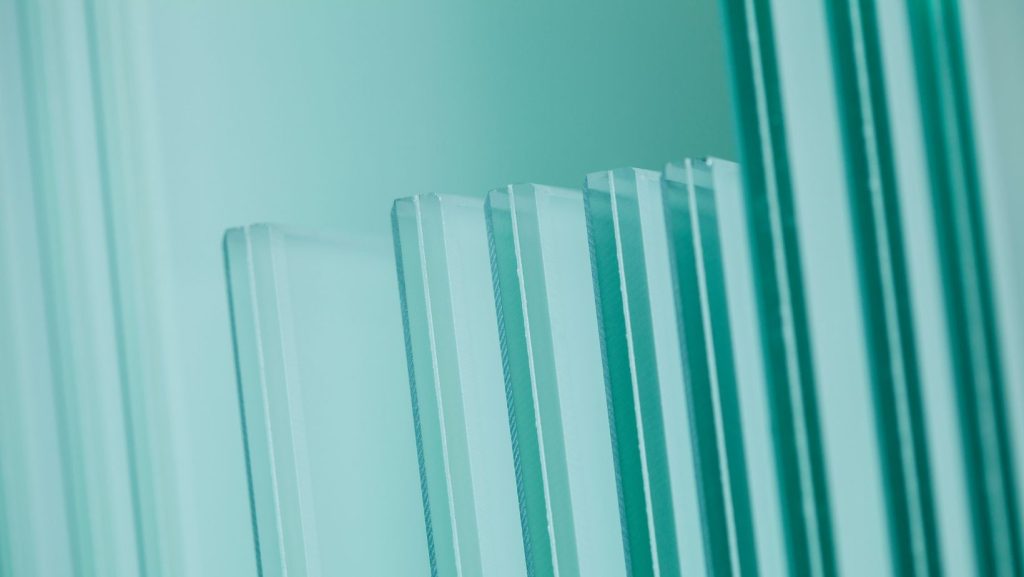
Additionally, laminate glass enables you to incorporate designs between the layers of glass for those who are looking to add a custom touch to their space.
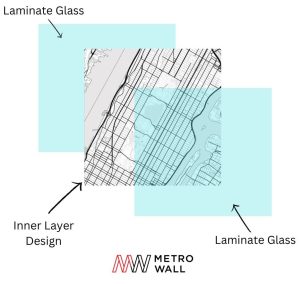
Specialty Glass: Switchable Glass
In addition to standard glass types, there are numerous specialty glasses to choose from. One of the most popular is switchable glass (aka privacy glass) because it offers privacy control. With the flip of a switch, this glass can go from transparent to translucent, making it ideal for tenants who don’t want to compromise on visual privacy or transparency, such as meeting rooms, executive boardrooms, and other spaces that need privacy functionality.
Of course, there are other types of specialty glass, such as colored glass, curved glass, fluted glass, and acid-etched glass.
So, which type of glass is “right” for your project? As you can see, it depends. But talking with a glass wall expert early on in the design process about the different requirements for your project will help you narrow down the glass types you can choose.
Download a brochure to learn about our premium glass wall interiors or book an appointment at our new New York City showroom to sit with an expert and see our glass wall interiors in person.
